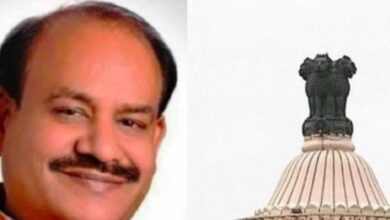neck and spine problems

As the disc dries and shrinks, signs of osteoarthritis appear in the form of cracks at the edges of the bone. Cervical spondylosis is a common disease of old age (65+) and 85 percent of people suffer from it in some form or the other. Every year more than one crore cases come in our country. It cannot be completely cured but the problems caused by it can be treated with physiotherapy, It can be managed with medicines and surgical methods.
In medical science, this term is used for the damage caused by wear and tear in the spinal discs of the neck with increasing age. As the disc dries and shrinks, signs of osteoarthritis appear in the form of cracks at the edges of the bone. Cervical spondylosis is a common disease of old age (65+) and 85 percent of people suffer from it in some form or the other. Every year more than one crore cases come in our country. It cannot be completely cured but the problems caused by it can be managed with physiotherapy, medicines and surgical methods.
What symptoms emerge?
Its symptoms emerge in the form of pain in the neck, spine and stiffness in the surrounding muscles. Due to this, the area of the spinal cord through which the nerves that control the whole body pass, the narrowing of the place puts pressure on the nerve and causes tingling, numbness, weakness, loss of coordination in the extremities. Difficulty in walking and loss of control over the bladder and bowels.
What are the reasons for this?
With ageing, these symptoms emerge from the decay (breakdown) in the bones and cartilages of the spine and neck-
Dehydrate Disc: The discs between the vertebrae (vertebrae) from the neck to the entire spine act as cushions. By the age of 40, most people feel pain and stiffness as the bones of the vertebrae (vertebra) touch each other due to the drying and shrinking of the discs of the spine.
herniated discWith ageing, the condition of a herniated disc is created due to cracks in the outer parts of the spinal disc, which increases the pressure on the spinal cord and nerve root.
Bone Spurs: Due to disc degeneration, the spine starts producing abnormally large amounts of bone to strengthen the bone, which puts pressure on the nerve root of the spinal cord and results in back and neck pain.
Stiff Ligament: Ligaments are the tissues of the spinal cord that hold the bones together. As we age, the flexibility of the neck decreases due to stiffness of the ligaments.
risk factor
The risk of cervical spondylosis increases with age. People whose work is such in which the neck is bent repeatedly, keeping more weight on the head or more stress also increases its risk. Neck injury, smoking and some genetic factors also increase the risk.
Can there be complications?
If the spinal cord or nerve root becomes severely compressed due to this disease, then the damage becomes permanent and the person has difficulty in moving.
How to confirm?
The cervical spondylosis confirmation process begins with a physical examination, under which the muscle strength and alertness are tested to check the movement limit and flexibility of the neck and to know the pressure on the spine. Doctors perform gait tests to test whether there is an effect on the gait or a defect in the coordination due to the shrinkage of the spinal cord.
Imaging tests such as X-rays, CT scans and MRIs are done to look for damage to the discs and bones. These reveal bone spurs, tumors, infections, fractures and pressure on the nerve root. Myelography is done for more detail, in which scanning is done by injecting a tracer dye into the spinal canal.
Nerve function tests check for blockage between nerve signals and muscles. Electromyography is done in this test. This test measures electrical activity in the nerve because the nerve or nerves itself send messages when the muscle is contracting and relaxing. In addition, nerve conduction studies measure the strength and speed of nerve signals by attaching electrodes to the skin.
What is the treatment?
Treatment of cervical spondylosis is dependent on the symptoms and severity. Treatment aims to relieve pain and maintain normal movement of the victim and prevent permanent damage to the spinal cord and nerves. For this, pain relievers, anti-inflammatory, anti-seizure, anti-depression and muscle relaxant medicines are given.
Therapy is also effective in its treatment, with the physiotherapist teaching exercises that help to flex and strengthen the muscles of the neck and shoulders. Some people also benefit from the use of traction, which helps give them more space within the spine when the nerve root is compressed.
When therapy and drugs do not work, surgery is needed, if surgery is done to relieve weakness of the extremities and to make more space for the nerve root in the spine. These include removal of herniated discs or bone spurs, removal of damaged part of the vertebra, fusing a part of the neck with bone grafts or hardware.
Lifestyle and home remedies
If there are mild symptoms of cervical spondylitis, regular exercise and walking can help, reducing the chances of neck and lower back pain. If there is pain, take pain killer medicines, neck compress or ice pack also gives relief in pain. It is fine to use braces to relax the neck muscles, but it should not be worn for a long time. Wearing it for a long time weakens the neck muscles. If you suddenly feel numbness or weakness in the extremities or loss of control over the intestines, see a doctor immediately.





